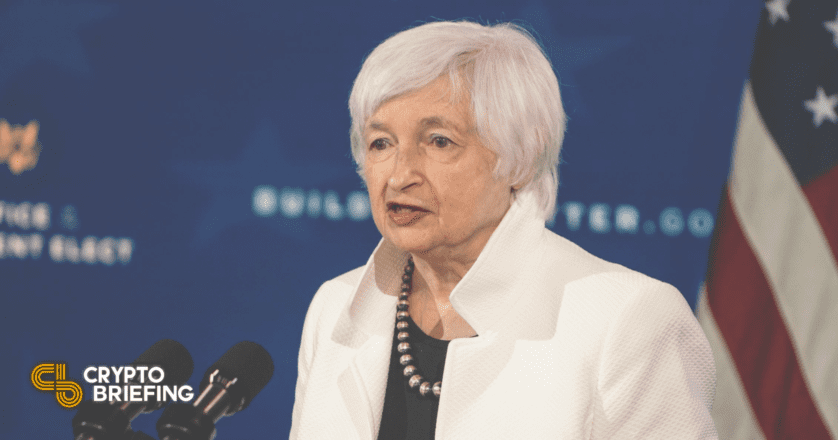Treasury Seeks Public Comment on Crypto’s Role in Financial Crime
The U.S. Treasury Department is asking the public to comment on how crypto may be used for financial crime and the risks associated with digital assets.

Key Takeaways
- The U.S. Treasury Department has published a request for comment, inviting members of the public to share their views on the potential risks associated with digital assets.
- The notice included a list of questions for the public, including requests for advice on how to prevent illicit crime in the DeFi and NFT spaces, and ways to implement "controls" on a possible digital dollar.
- It comes after the Treasury published three digital asset reports Friday alongside the White House's first crypto regulatory framework in relation to President Biden's executive order on “Ensuring Responsible Development of Digital Assets.”
Share this article
The request for comment follows three reports from the Treasury discussing the future of payments, the impact crypto could have on consumers, and preventing crypto-related financial crime.
Treasury Asks Public to Talk Crypto Crime
The U.S. Treasury Department is seeking the public’s help to determine how to prevent financial crime in the digital assets space.
The government’s finance office put out a request for comment Monday, inviting members of the public to share their perspectives on digital assets and the role they could play in illicit finance. An excerpt read:
“Through this request for comment (RFC), Treasury is requesting input from the public to understand the public’s view on the emerging risks as well as what actions the U.S. government and Treasury Department should take to mitigate the risks.”
The notice references President Biden’s executive order on “Ensuring Responsible Development of Digital Assets,” which was signed into law in March. It follows hot on the heels of three crypto reports from the Treasury, which were published Friday covering the future of payments, the potential impact the technology could have on consumers and businesses, and ways to mitigate financial crime. The White House also published its first comprehensive framework on regulating the space the same day.
In today’s notice, the Treasury has requested members of the public to come forward to voice their opinions on five topics: illicit finance risks, anti-money laundering (AML) and counter-terrorist financing (CTF) regulations, implementing global AML and CTF standards, and engaging with the private sector on AML and CTF regulations.
Treasury Highlights DeFi, NFTs, CBDC
The Treasury’s note includes a number of questions for the public, asking whether it has “comprehensively defined the illicit financing risks associated with digital assets.” It also asks the public to advise on potential “illicit finance risks” associated with DeFi and NFTs.
Other questions include possible ways the government can work to prevent crypto-related cybercrime and ransomware, how the Treasury can use analytics tools to prevent illicit finance, and how it may implement AML and CTF “controls” into a U.S. Central Bank Digital Currency. Last week’s updates from the White House and the Treasury hinted at the possibility of a digital dollar on multiple occasions, though no such currency has yet been confirmed. While the Treasury is set to assess the implications of launching a CBDC, the Federal Reserve has also been tasked with ongoing research into how it could be designed.
The latest developments from the Biden Administration show that the Treasury is paying close attention to the crypto sector, though it’s still unclear how it plans to weigh in. Based on today’s update, it doesn’t yet know how it plans to tackle regulating the technology either. In Friday’s update, Treasury Secretary Janet Yellen pointed to “significant opportunities” in the crypto space, though the reports also placed sharp focus on the potential risks. Today’s notice covering illicit finance concerns reiterates that point, proving that the department thinks there is a downside to crypto as well as possible upside.
Disclosure: At the time of writing, the author of this piece owned ETH and several other cryptocurrencies.
